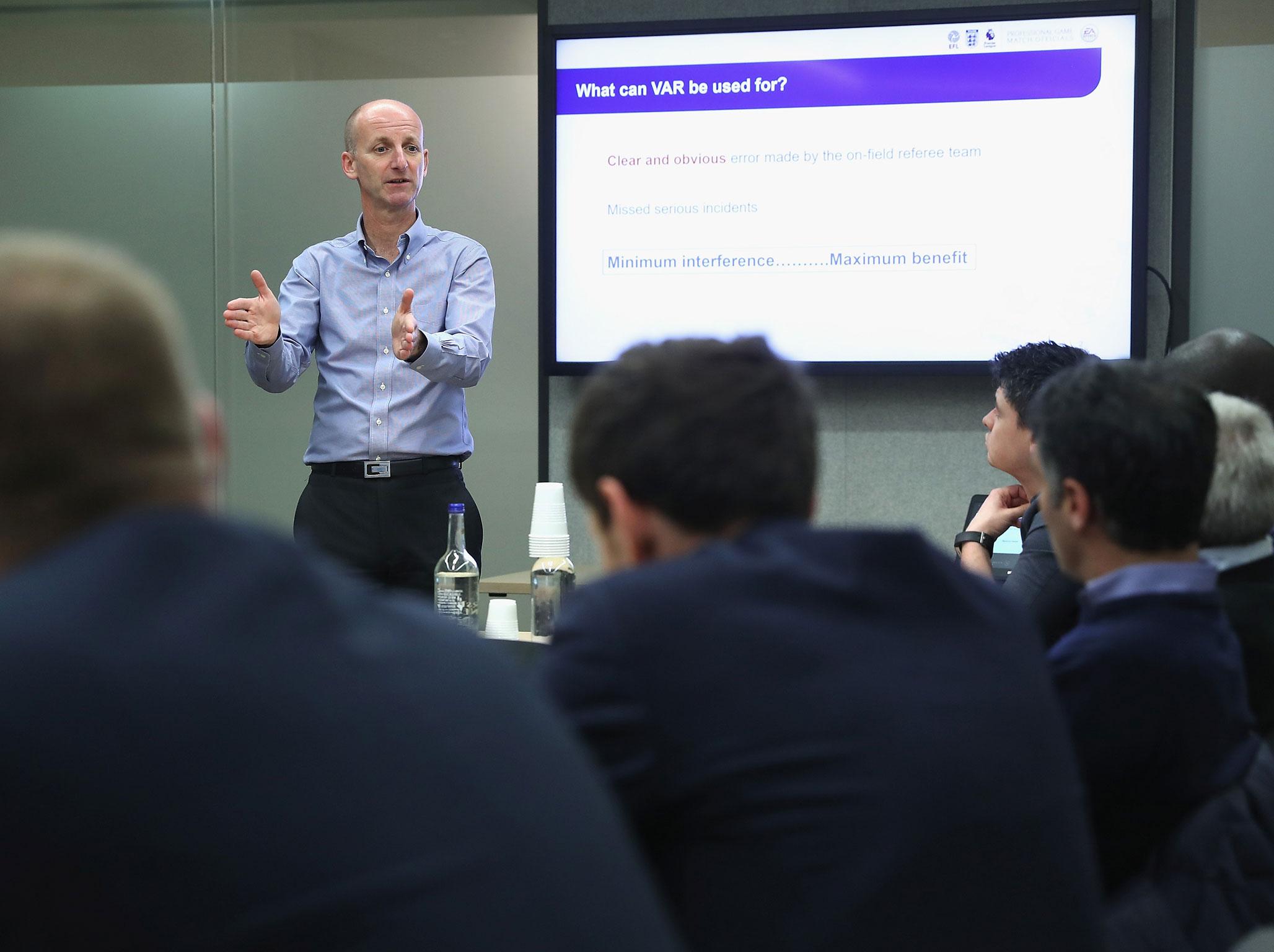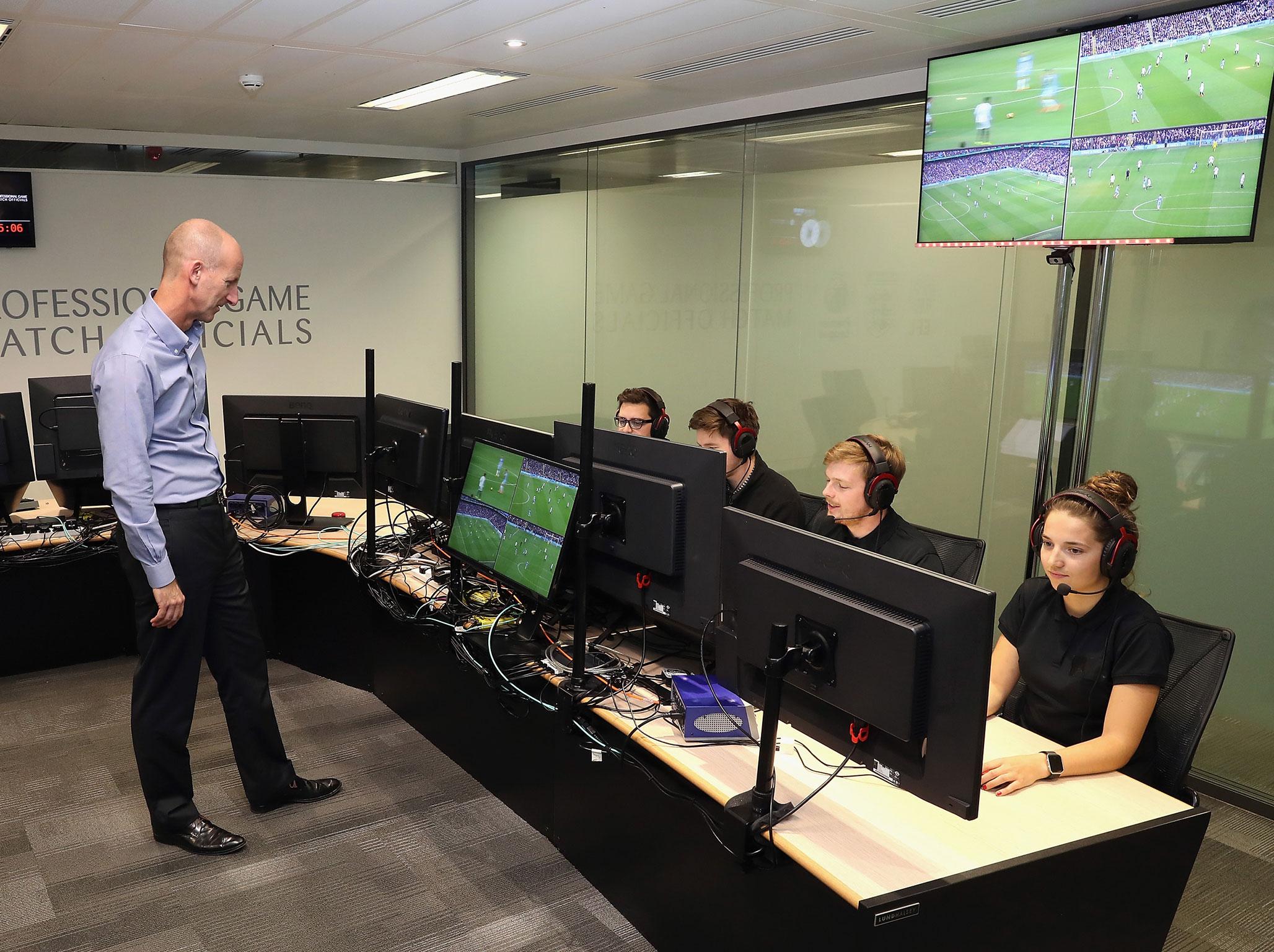How will VAR work? Football takes first step into unknown striving for 'minimum interference with maximum benefit'
The PGMOL are keen to stress that this new technology is just a starting point, is open to improvement, and that it will not take the debate out of football

Your support helps us to tell the story
From reproductive rights to climate change to Big Tech, The Independent is on the ground when the story is developing. Whether it's investigating the financials of Elon Musk's pro-Trump PAC or producing our latest documentary, 'The A Word', which shines a light on the American women fighting for reproductive rights, we know how important it is to parse out the facts from the messaging.
At such a critical moment in US history, we need reporters on the ground. Your donation allows us to keep sending journalists to speak to both sides of the story.
The Independent is trusted by Americans across the entire political spectrum. And unlike many other quality news outlets, we choose not to lock Americans out of our reporting and analysis with paywalls. We believe quality journalism should be available to everyone, paid for by those who can afford it.
Your support makes all the difference.VAR will improve the accuracy of refereeing decisions from 96% to 98%, said Mike Riley, Managing Director of PGMOL, ahead of its introduction to English football.
The system is set to be used twice over the next three days, first in Monday’s FA Cup third-round tie between Brighton and Hove Albion and Crystal Palace and then in Wednesday’s League Cup semi-final first leg at Stamford Bridge between Chelsea and Arsenal, and the authorities have been keen to stress beforehand that the emphasis of this experiment is to focus on “clear and obvious” errors made by the on-field referee.
In much of the debate about VAR, there has been a perception that it will cause constant disruptions to the game to review every incident that involves shades of grey, but Riley stressed at a media demonstration it will be the opposite. The system will instead only be called upon when a referee has missed something that is demonstrably black or white. The rule of thumb is essentially “if it’s not clear and obvious, leave it”, and “minimum interference, maximum benefit”.
There is also thereby an inherent acceptance that the system is not perfect, but then it was also stressed that the idea is merely to improve accuracy to the best and cleanest possible level, and that it is just a starting point that can be enhanced in future.
Riley stated that it is calculated that referees currently get 96% of decisions accurate. “If we’re saying 4% of decisions are wrong, a 2% improvement is good for the game, as long as we don’t increase interference.”
It in theory means that highly debatable incidents won’t go to review, like penalty decisions that require repeated replays to discern whether it was a foul or a dive, especially since referees have no recourse to call for VAR assistance. They are advised to just referee the game as normal.

There also a number of checks and “safety nets” to ensure this. Primarily, VAR can only be used for four match-changing situations:
1. Whether goals should stand
2. Penalty decisions
3. Direct red cards shown or not shown, although second yellow cards are not reviewable to draw a line
4. Mistaken identity, like Alex Oxlade-Chamberlain and Kieran Gibbs against Chelsea in 2014.
A key with the system is to maintain the natural flow of the game, and not have situations where a 30-yard screamer is ruled out because of a debatable 50-50 challenge at the other end of a pitch a minute beforehand, something that clubs and players have brought up in meetings with officials about VAR. As such, with goals where there is clear and obvious issue, officials will look to the move that immediately precedes the goal. MLS have managed to narrow this down to a two-second timeframe in their own use.

With red cards, VAR will only intervene if it is believed the referee has missed a clear offence. An off-the-ball confrontation perhaps the most obvious example. There are instances when VAR can advise the referee to caution a player. They are with simulation, but only when the offence takes place in the 18-yard box; or when an attacker punches the ball into the goal in a deliberate attempt to score.
The way that VAR works is that all cameras from a stadium - usually between 12 and 15, with 15 at the Amex Arena for Monday - will transmit a feed back to the Video Operations Room in Stockley Park in Uxbridge where the VAR and a team will be based for all matches. They will then signal to the ref when it should be used, and that usually require between 30 and 40 seconds - the time it normally takes to restart after a goal is scored. In order to ensure that the game isn’t farcically called back as a review goes on, the VAR only has until the next time the ball goes out in play to signal to the referee, although they can say for him to stop play when it does go out or goes to a neutral zone.
A second potential stage is the on-field review, that a referee can request or be advised to look at it. The official will then go to the referee review area to look at footage of an incident. Managers and players will be given a two-stage warning for encroaching on this zone, while players can be booked if they aggressively replicate the referees’ ‘square’ gesture to signal a VAR - as in the case of waving an imaginary yellow card.

The final decision in all cases will lie with the referee, and they can go against the VAR. They have been encouraged in meetings and training camps to just oversee games as normal and make decisions based on their own view, but there is an acceptance that some of this might require a different way of refereeing.
That is probably most demonstrably the case with offside. A referee might not act on an offside flag in case it’s wrong, knowing there is more benefit to the game to let it play, because any incorrect call will be hauled back. The VAR will view offsides with lines across the screen.
The authorities ultimately want to have a high threshold for intervention and not keep stopping the game, and previous experiments have shown - as well as use of the system in MLS, AFL, Serie A and the Bundesliga - that it will on average only be required once every two to three games.
Given the debate and some resistance to VAR, Riley and the authorities are keen to stress that this is just a starting point, is open to improvement, and that it will not take the debate out of football.
Since some decisions - like, say, Eden Hazard’s penalty against Arsenal - will always come down to subjective interpretation and have no objective correct call, there will always be an element of debate. There is a certain amount of “tough, deal with it” with those as it’s part of the game. The system is there to solve what objectively can be solved.
“This will be really good for football when we’ve worked through it and ironed out all the subtleties and it’s going to take a while,” Riley says. “We can’t make football the perfect game. If, as this progresses, the game as a whole says here is a situation we can intervene, we’ll look at that. But we’re not there yet.”
Join our commenting forum
Join thought-provoking conversations, follow other Independent readers and see their replies
Comments